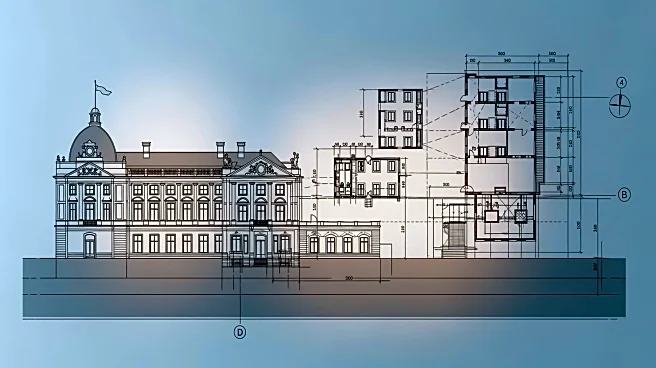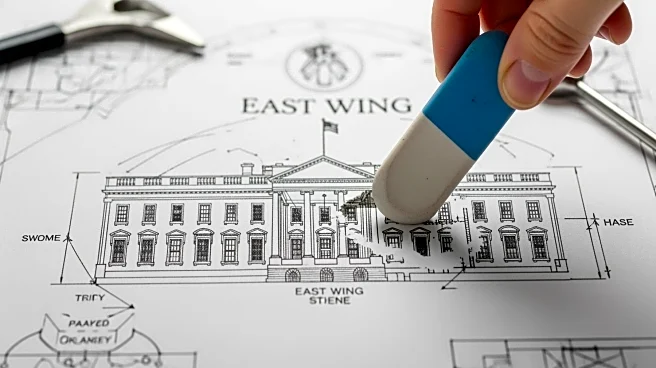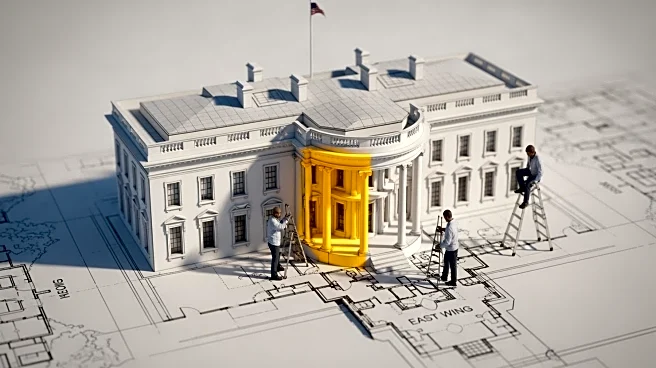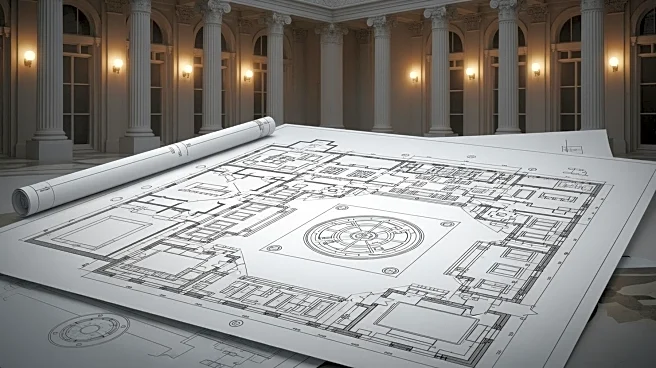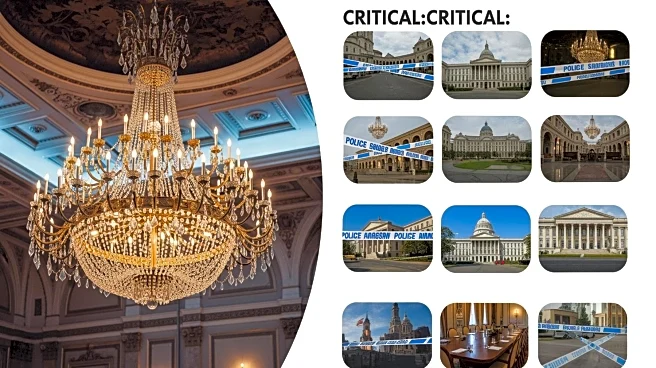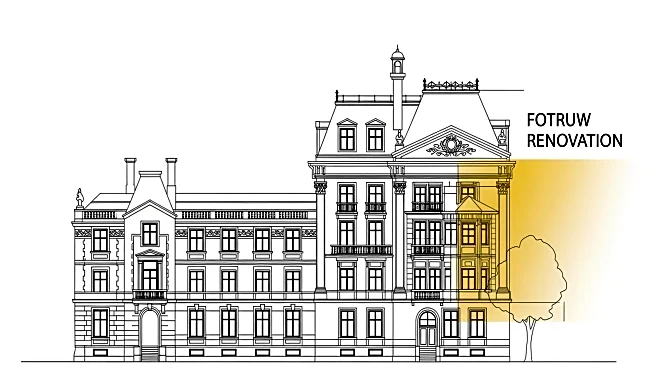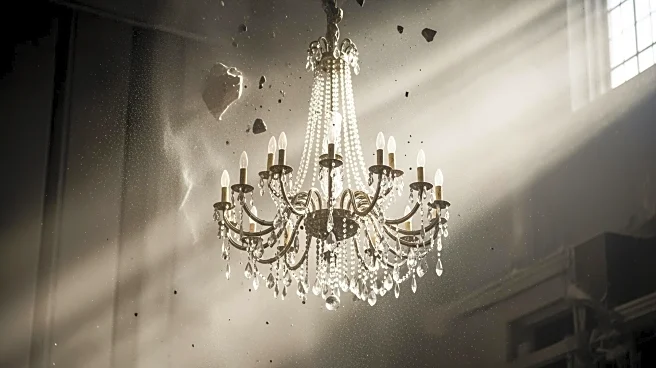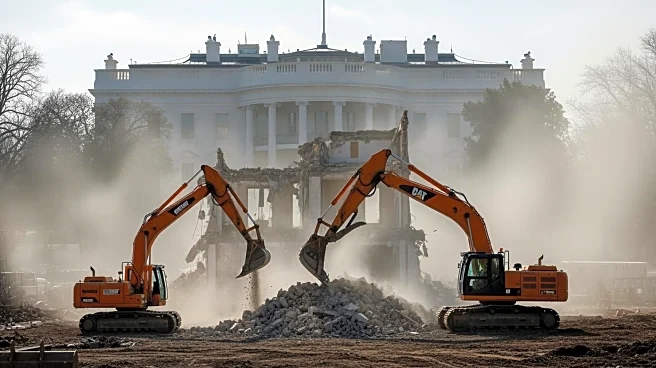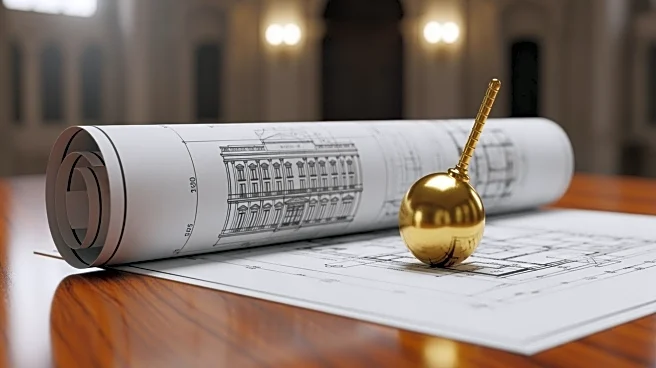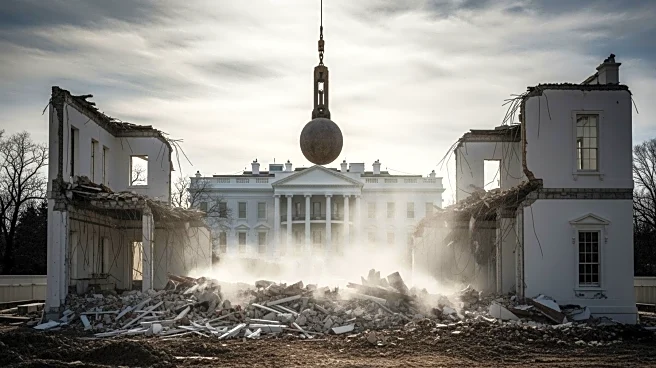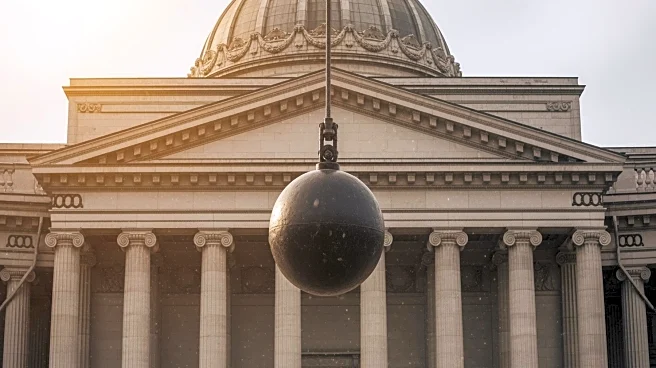What's Happening?
President Trump has commenced a significant renovation of the East Wing of the White House, aiming to construct a new ballroom inspired by classical architecture. The project, estimated to cost $200 million,
is funded by private interests with business ties to the federal government. The new addition will span 90,000 square feet, providing a large event space for up to 900 guests. This development follows Trump's executive order promoting classical architecture for federal buildings. The renovation has sparked debate over its necessity and impact on the historic structure, with critics questioning the prioritization of such a project amid ongoing government budget challenges.
Why It's Important?
The renovation of the White House's East Wing represents a significant alteration to one of the nation's most iconic buildings. By expanding the event space, the project could influence the nature of official gatherings and diplomatic events hosted at the White House. The focus on classical architecture reflects broader cultural and political trends, potentially impacting future federal building designs. However, the project's funding sources and lack of public approval raise ethical concerns, highlighting the intersection of private interests and public assets. As the renovation progresses, it may prompt discussions on the preservation of historical sites and the role of private funding in government projects.
What's Next?
As construction continues, the renovation may face scrutiny from preservationists and historians concerned about maintaining the White House's historical integrity. The project's completion could lead to changes in how the White House is utilized for official functions, potentially affecting the role of the First Lady's office. Additionally, the renovation may influence future architectural decisions for federal buildings, aligning with Trump's vision for classical design. Stakeholders, including government officials and cultural organizations, may advocate for greater transparency and public involvement in such projects, ensuring that historical preservation remains a priority.
Beyond the Headlines
The renovation of the White House's East Wing raises questions about the balance between modernization and historical preservation. The project's reliance on private funding underscores the complexities of financing public assets, potentially setting a precedent for future government projects. The emphasis on classical architecture reflects a cultural shift towards traditional design, which may influence broader architectural trends. As the renovation progresses, it could spark debates on the ethical implications of altering national landmarks and the role of private interests in shaping public spaces. These discussions may contribute to evolving standards for preserving and enhancing historical sites.
